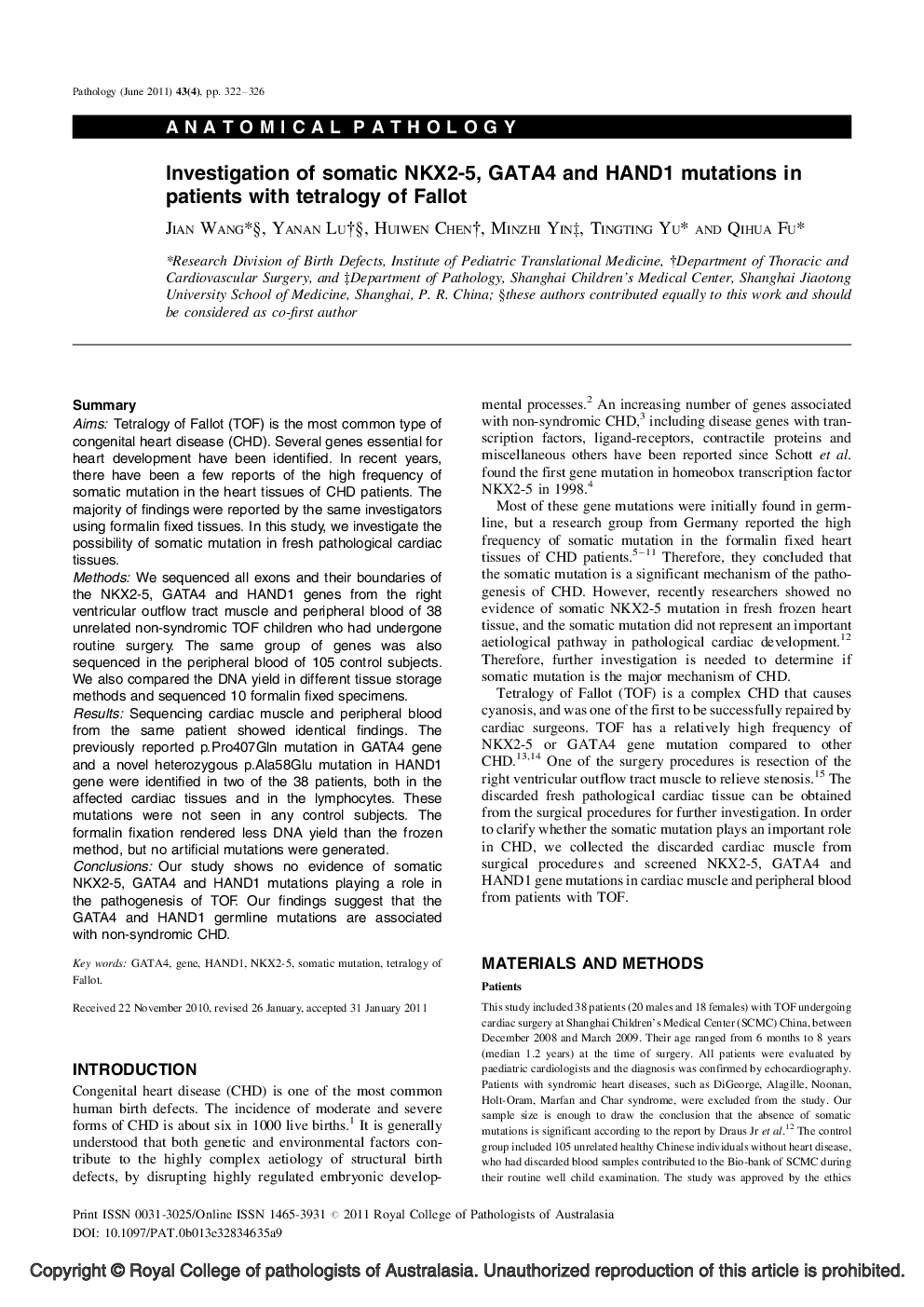| Article ID | Journal | Published Year | Pages | File Type |
|---|---|---|---|---|
| 105354 | Pathology | 2011 | 5 Pages |
SummaryAimsTetralogy of Fallot (TOF) is the most common type of congenital heart disease (CHD). Several genes essential for heart development have been identified. In recent years, there have been a few reports of the high frequency of somatic mutation in the heart tissues of CHD patients. The majority of findings were reported by the same investigators using formalin fixed tissues. In this study, we investigate the possibility of somatic mutation in fresh pathological cardiac tissues.MethodsWe sequenced all exons and their boundaries of the NKX2-5, GATA4 and HAND1 genes from the right ventricular outflow tract muscle and peripheral blood of 38 unrelated non-syndromic TOF children who had undergone routine surgery. The same group of genes was also sequenced in the peripheral blood of 105 control subjects. We also compared the DNA yield in different tissue storage methods and sequenced 10 formalin fixed specimens.ResultsSequencing cardiac muscle and peripheral blood from the same patient showed identical findings. The previously reported p.Pro407Gln mutation in GATA4 gene and a novel heterozygous p.Ala58Glu mutation in HAND1 gene were identified in two of the 38 patients, both in the affected cardiac tissues and in the lymphocytes. These mutations were not seen in any control subjects. The formalin fixation rendered less DNA yield than the frozen method, but no artificial mutations were generated.ConclusionsOur study shows no evidence of somatic NKX2-5, GATA4 and HAND1 mutations playing a role in the pathogenesis of TOF Our findings suggest that the GATA4 and HAND1 germline mutations are associated with non-syndromic CHD.
